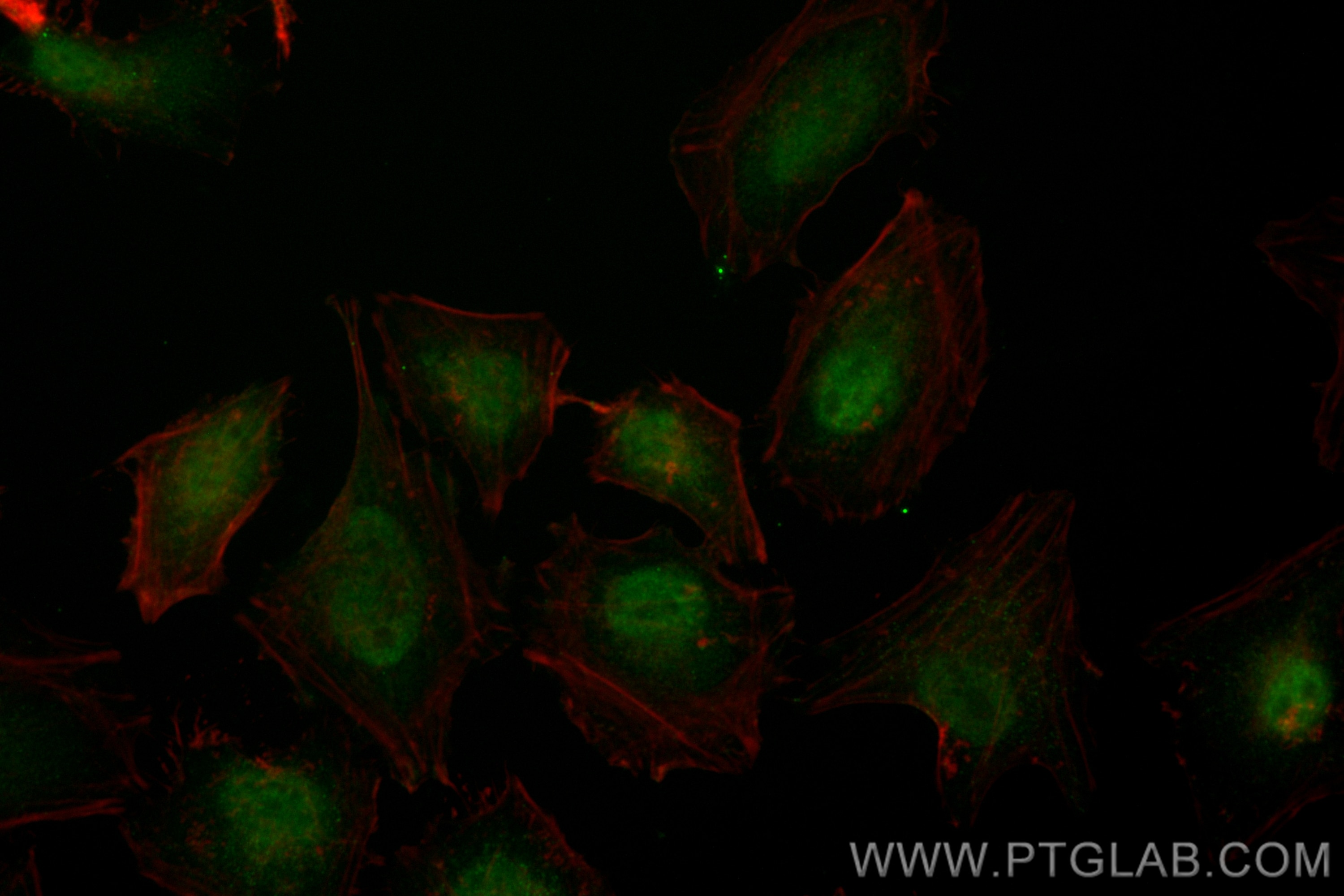Tested Applications
| Positive IF/ICC detected in | HeLa cells |
Recommended dilution
| Application | Dilution |
|---|---|
| Immunofluorescence (IF)/ICC | IF/ICC : 1:50-1:500 |
| It is recommended that this reagent should be titrated in each testing system to obtain optimal results. | |
| Sample-dependent, Check data in validation data gallery. | |
Product Information
CL488-80718-7 targets PTEN in IF/ICC applications and shows reactivity with human samples.
| Tested Reactivity | human |
| Host / Isotype | Rabbit / IgG |
| Class | Recombinant |
| Type | Antibody |
| Immunogen | PTEN fusion protein Ag17274 Predict reactive species |
| Full Name | phosphatase and tensin homolog |
| Calculated Molecular Weight | 47 kDa |
| GenBank Accession Number | BC005821 |
| Gene Symbol | PTEN |
| Gene ID (NCBI) | 5728 |
| RRID | AB_3673037 |
| Conjugate | CoraLite® Plus 488 Fluorescent Dye |
| Excitation/Emission Maxima Wavelengths | 493 nm / 522 nm |
| Form | Liquid |
| Purification Method | Protein A purification |
| UNIPROT ID | P60484 |
| Storage Buffer | PBS with 50% glycerol, 0.05% Proclin300, 0.5% BSA, pH 7.3. |
| Storage Conditions | Store at -20°C. Avoid exposure to light. Stable for one year after shipment. Aliquoting is unnecessary for -20oC storage. |
Background Information
PTEN is one of the most critical tumor suppressors, which functions at different subcellular locations, including the plasma membrane and nucleus. The PTEN protein is located at different subcellular regions-PTEN at the plasma membrane suppresses PI3-kinase signaling in cell growth, whereas PTEN in the nucleus maintains genome integrity. At the plasma membrane, PTEN counteracts PI3 kinase signaling by dephosphorylating the potent second messenger PIP3 to PIP2. The loss of PTEN in cancer cells results in over-activation of AKT and mTOR signaling, leading to excessive stimulation of cell growth and inhibition of cell death. In the nucleus, PTEN functions in DNA repair, genome stability, and cell cycle control through associations with Rad51 and p53. PTEN stability is primarily regulated by phosphorylation of C-terminal tail domains (Thr366, Ser370, Ser380, Thr382, Thr383, and Ser385). The phosphorylation leads to a "closed" state of PTEN and maintains PTEN stability. Dephosphorylation of the C-terminal tail opens the PTEN phosphatase domain, thereby increasing PTEN activity. PTEN protein is of the apparent molecular mass expected for PTEN (55 kDa) and PTENα (70 kDa).(PMID: 33083717, PMID: 20622047, PMID: 24768297)
Protocols
| Product Specific Protocols | |
|---|---|
| IF protocol for CL Plus 488 PTEN antibody CL488-80718-7 | Download protocol |
| Standard Protocols | |
|---|---|
| Click here to view our Standard Protocols |



